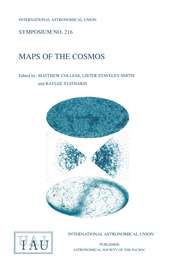No CrossRef data available.
Article contents
Model Calculations of Solar Wind Expansion Including an Enhanced Fraction of Ionizing Electrons
Published online by Cambridge University Press: 14 August 2015
Abstract
Collective interactions of the solar wind and newly ionized interstellar gas cause turbulent electron heating to ionizing energies analogous to laboratory experiments on the critical ionization velocity effect. Implications for solar wind and interstellar gas dynamics are calculated by simultaneously solving continuity equations for solar wind protons, interstellar hydrogen atoms, and energetic electrons. Electron impact ionization is shown to be practically as important as photoionization, giving rise to a stronger deceleration and heating of the distant solar wind, a weaker terminating shock, a smaller stand-off distance of the helio pause, and implying higher densities of the outer solar wind and the interstellar neutral gas.
- Type
- Part II. Coronal and Interplanetary Responses to Long Time Scale Phenomena
- Information
- Symposium - International Astronomical Union , Volume 91: Solar and Interplanetary Dynamics , 1980 , pp. 159 - 162
- Copyright
- Copyright © Reidel 1980


